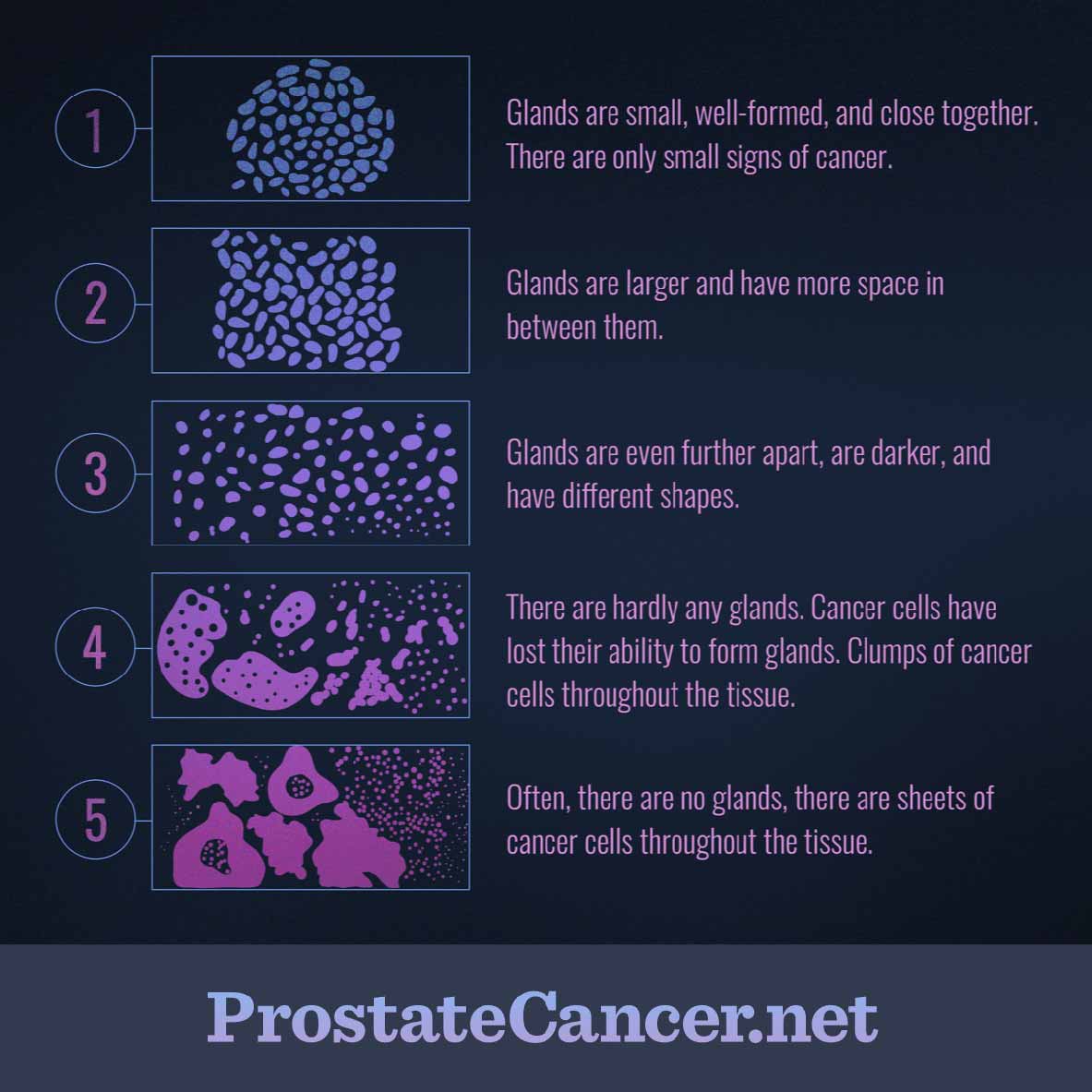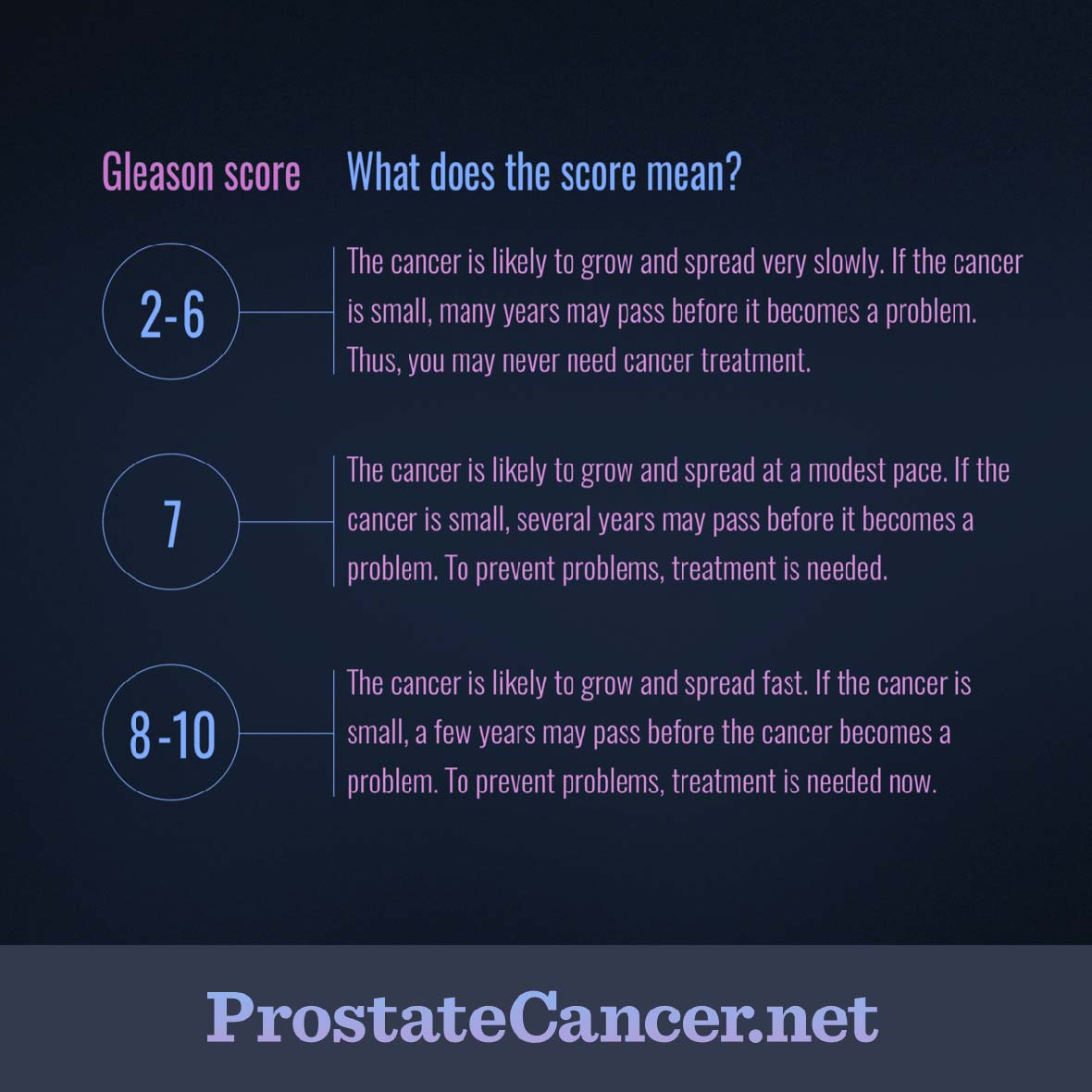What Is Gleason Score?
Reviewed by: HU Medical Review Board | Last reviewed: October 2017 | Last updated: February 2023
After you have a prostate biopsy, a pathologist will study your cells to determine if cancer is present and what it looks like. During a core needle biopsy, approximately 10-12 samples, called cores, will be taken. The pathologist will analyze these cores and diagnose each sample individually. They will then combine all of the sample diagnoses to create a report on any cancer that is present.
Each core may look different from one another, as they are taken from varying sites within the prostate. For example, one core may have been taken directly from a cancerous tumor, while another core may miss a cancerous area completely and appear normal. When a pathologist looks at a core sample, they will assign the cells present a Gleason grade.
What are Gleason grades?
A Gleason grade or Gleason pattern was first developed by a physician named Donald Gleason in the 1960’s. The cancer cells in each core will be given a grade based on how closely they look like normal, healthy cells. When a core has cells that appear normal, they are given a grade of 1. The grades continue upward to a maximum grade of 5, in which the cells are very abnormal.
Cells in cores with lower grades are said to be well-differentiated, and if they are deemed cancerous, they are less likely to be spread quickly (meaning they suggest that a man’s cancer could be less aggressive). Cells in cores with higher grades are said to be poorly differentiated and have a higher chance of being aggressive or spread quickly. The grades of each core are added to determine your Gleason score.
Figure 1. Gleason grades
What is a Gleason score?
When all of the cores are diagnosed and analyzed as a whole, the pathologist will determine your Gleason score (or Gleason sum). Your Gleason score is a combination of two numbers that can be written in a variety of ways. The first number represents the Gleason grade that was most commonly found throughout your cores and the second number represents the next most common score.
These numbers may be written as a simple mathematic equation, such as 3+4=7, for a Gleason score of 7, or it may be written as 7/10 or 7 (3+4). Since 5 is the maximum Gleason grade, the highest score you can get is a 10 (5+5=10). How low of a Gleason score a person can receive can be dependent on the pathologist reading the results. The lowest score in theory is a 2 (1+1=2), but in many cases, pathologists will diagnose cancer or assign a score if the sum is 6 or higher.
What do the Gleason scores mean?
Just like Gleason grades, a higher Gleason score indicates that the cancer found may be more aggressive or spread quickly. A score of 6 or below is considered low-grade and less likely to spread. A score of 8-10 is considered high-grade and is more likely to be aggressive or spread quickly. A score of 9 or 10 is twice as likely to be fast-growing than an 8. A score of 7 can be more ambiguous. This is where the order of the numbers may come into play.
Since the score comes from two numbers, listed with the most common number first, it’s possible for two people to have the same score but to have different risk of cancer spread. For example, if two individuals have a score of 7, but one has a 3+4 and the other has a 4+3, the one with the 4+3 may be at higher risk for more aggressive cancer than the 3+4, since the higher grade cells are more common.
Figure 2. Interpreting the Gleason score
Additionally, it’s possible for another individual to have a score of 7 that comes from grade 5 and 2 cells (5+2=7). In this case, the presence of the highest grade cells (grade 5) indicates that the cancer is likely to be more aggressive. It’s important to find out if there are any grade 5 cells present in your sample, as these could indicate that you may have a higher risk of cancer recurrence later on. Results of which there are three or more common types of cells present may be specially designated on the report. Your doctor or the pathologist analyzing your biopsy samples will indicate if this is the case for you.
You may also be put into a Gleason grade group on your pathology report. Typically, Gleason grade groups represent the following:
- Gleason grade group 1: Gleason score of 6 or less
- Gleason grade group 2: Gleason score of 3+4=7
- Gleason grade group 3: Gleason score of 4+3=7
- Gleason grade group 4: Gleason score of 8
- Gleason grade group 5: Gleason score of 9-10
These groups may help characterize your cancer further or help inform your doctor on potential treatment options. Your doctor will also take into account other factors such as PSA levels, your DRE (digital rectal exam), how many cores have cancerous cells present or how much is present in each core, any imaging tests you may have had, or if the cancer appears to have already spread when determining what your next steps are.1-3

